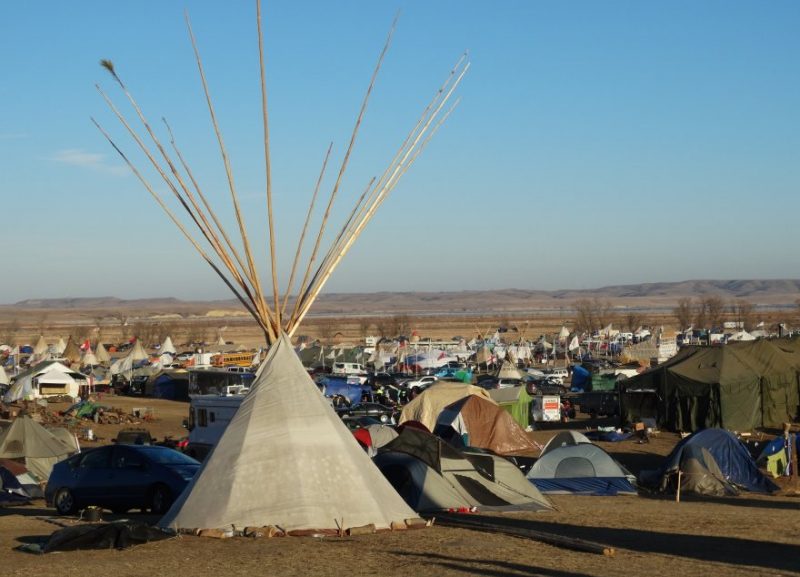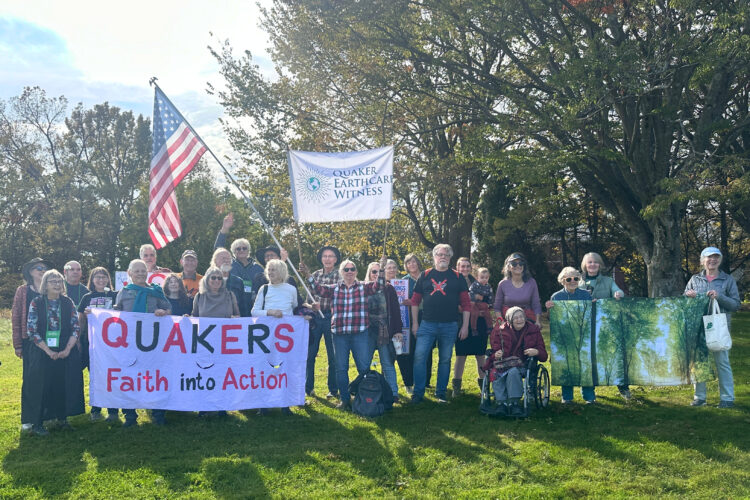A Call for More Radical Witness

By Tom Small.
“THERE’S A CALL, from both within and beyond FCUN, for a more radical witness.” That’s the first sentence of an article I wrote twenty years ago for BeFriending Creation. What was true for the Friends Committee on Unity with Nature in 1996 holds true again for the same organization, now Quaker Earthcare Witness.
My article, “The Forest Primeval, ” focused on the largest mass civil disobedience in Canadian history, at Clayoquot Sound in 1993. Almost 900 demonstrators, many of them Quakers, were arrested and charged with criminal contempt of court, for blocking logging roads to prevent clear-cutting of ancient rainforest on Vancouver Island, in British Columbia.
In the article I raised two questions: what was accomplished by that massive environmental witness? and what lessons did it offer to us in FCUN (QEW)?
In 1996, the answer to the first question was not encouraging; clear-cutting, in Clayoquot and elsewhere, proceeded apace. But what Robert F. Kennedy, Jr., called the “spectacle” and “drama” of the “peace camps” (TRIALS, p. viii) set in motion something of great power that included the First Nations for whom the forest is sacred and their home—something that requires a different response in 2016. Therein lies the message for us.
Carol MacIsaac, a Quaker music teacher, in her eloquent pre-sentencing statement to the court, affirmed, “I simply know that I did what I had to do. I have felt blessed ever since. I believe that the truth sets us free… We have touched the world” (p. 156).
Now, in these past few months, we have witnessed another powerful spectacle that gained international attention. The drama of the camps and confrontations at Standing Rock Reservation has again “touched the world.” Despite a temporary, fragile victory in December for the water protectors, the ultimate outcome remains uncertain. But the longer-term lesson of Clayoquot and the Great Bear Rainforest between Vancouver Island and the Alaskan panhandle is hopeful.
In 2000, Clayoquot Sound became British Columbia’s first UNESCO World Biosphere Reserve. In 2013, the Tla-o-qui-aht (Clayoquot) First Nations declared two more sections of their ancestral lands to be “tribal parks,” thus placing the southern third of the Clayoquot watershed under their protection. The 265,000 hectares of Clayoquot rainforest remain largely intact, unlike the remainder of Vancouver Island, which is more than 75% logged.
In February of 2016, 85% of old-growth forest in the Great Bear Rainforest was declared off limits to industrial logging. Logging in the remaining 15% is subject to the most stringent logging standards in North America.
Without the demonstrations and blockades of 1993 and the worldwide attention they gained, the boycotts of large companies marketing old-growth rainforest timber, the work of environmental organizations such as Greenpeace, and strong leadership from First Nations, industrial logging would still be “king” in the world’s largest temperate rainforest.
Yes, it did take more than 20 years of keeping faith: years of resistance and sacrifice. It also required painstaking negotiation to achieve what everyone agrees is “a model for the world”—not just preservation of a unique, globally significant ecosystem but recognition, in the words of Dallas Smith, president of the Nanwakolas Council which represents six of the First Nations in the rainforest, that “there are indigenous people who are interwoven into the fabric.” It is that sense of interdependence between the forest and its peoples which ensures the future of ancient landscape.
So, a message from Great Bear is one of hope for Standing Rock, for a possible future of recognition, reconciliation, and renewed interdependence between the land and its indigenous peoples.
But what of QEW? Most of us involved in QEW are not indigenous. My own life has been a long struggle to feel “interwoven.” I lack rootedness in a tribal or “commons” tradition. Like most of us, I lack what Ruth Hopkins, born on Standing Rock Reservation, invokes: “This is something that’s kind of natural to us. When we have ceremonies, we do camps like this. It’s something that we’ve always known how to do, going back to pre-colonial times.”
How could we begin to develop such ceremonial knowledge? Could the golden eagle who landed at Standing Rock on October 30, allowing Natives to approach and even touch it for about an hour—could such a sacred messenger to and from the Great Spirit come to us? Not likely—at least not in that form. But the message from Standing Rock is nonetheless from spirit, and to us.
We can begin by standing still and saying No. Stand in solidarity with Standing Rock, with First Nations of the rainforest, with Chipko treehuggers of the Himalayan hills, with pastoralists of Kenya fighting eviction from the forest commons. Stand with them, moreover, by becoming native to our own homeplace, which is sacred. Stand our ground. Protect the place where we belong. Having taken our stand, work to restore what is now degraded and desecrated—restore it to something like the self-sustaining forest, prairie, savanna, river, or seacoast it formerly was—to “something that’s kind of natural,” with its own integrity. Something that can sustain itself—and us—in the hard times coming upon us.
Support the indigenous peoples themselves by providing them with the means—legal, financial, material—to do likewise for their own homelands. Together, let us seek, with Friends Committee on National Legislation, “an earth restored.” We can’t all literally stand with Standing Rock. We can, with last September’s American Friends Service Committee (AFSC) delegation to Standing Rock, “listen, learn, and begin to understand.” We can erect our own Standing Rock—literal or figurative—and make it the center of our own place on earth, protected and restored.
We can also heed the call from Dave Archambault II, Tribal Chairman of Standing Rock: divest from the banks which finance the desecration; boycott the corporations which provide the materials; join the campaign “to kill the black snake financially.” The Black Snake, of course, is not just one pipeline; it’s a vast web of pipelines ensnaring the earth and desecrating the lands of a newly risen continental alliance of First Nations. Nor are they merely pipelines—they’re life support for a snake with many heads.
Ultimately, it’s a matter of bringing home the “Findings” of the AFSC delegation to Standing Rock and making them our own. For me, the first two are especially significant:
1. This is different—first and foremost this is prayer. The whole of what is happening is a Ceremony.
2. There is centrality of healing in the purpose: healing the land, the water and the air—but especially important, healing the people (p. 29).
Thus we can heed the call from both within and beyond QEW for a “more radical witness.” Thus we will restore and keep faith with the First Nations who have taken the lead. Who knows? Perhaps the eagle—or some other avatar—will bless us with some affirmation from spirit.

